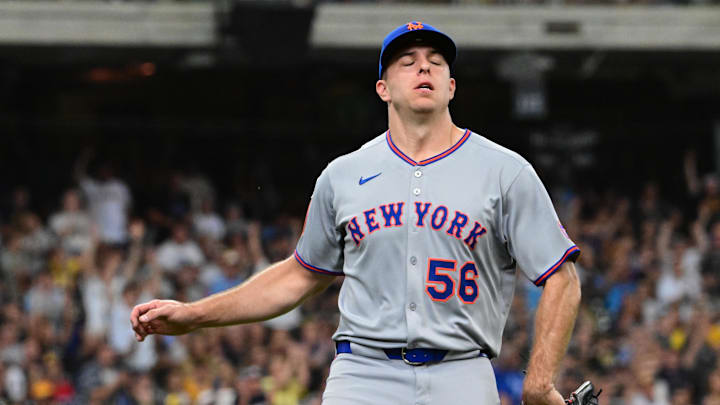There are a lot of assumptions we can make about David Stearns. From his days with the Milwaukee Brewers calling the shots through more than a year and a half with the New York Mets, he has been consistent about a few things. He’s a baseball executive who won’t sign starting pitchers to long contracts. His preferred choice is to find bargains with upside.
When it works, it comes off as smart. When it doesn’t, the team sinks quickly.
A revision philosophy has taken place in recent weeks with the Mets. At the MLB trade deadline, Stearns practically admitted the Mets were playoff-bound by foregoing some obvious roster needs and instead choosing to empower the team in innings six, seven, and eight. A bullpen now featuring a solid second lefty in Gregory Soto, an elite late-inning reliever like Tyler Rogers, and finally a closer-capable arm of Ryan Helsley has the Mets focusing on shortening games. The problem is they aren’t doing the early work so well.
The Mets built themselves to hold leads, but the problem is getting them first
A struggling starting pitcher staff where the biggest issue is getting innings from anyone not named David Peterson is at the crux of the season-long woes. A little more unpredictable yet detrimental is how poorly the offense has done. An inability to hit with runners in scoring position has made the ghost runner on second base practically null. The constant stranding of runners on base in early parts of games have made too many games bullpen dogfights. Unfortunately, some big mistakes there have cost them, too.
It wasn’t a complete farce to believe bolstering the bullpen was the way to act at the trade deadline. Few starting pitchers of any quality were actually traded. Other than center field, there wasn’t a completely reasonable place for the Mets to upgrade that wouldn’t have required a separate roster move. They could have conceivably added Eugenio Suarez or paid the price on Luis Robert Jr. rather than Cedric Mullins. We can nitpick forever. Their preference was to get a reasonably priced center fielder and load up on relievers.
Discussed ad nauseam, the inability to get any sort of length out of the starters is something the individual players will need to own. Carlos Mendoza has had instances where maybe he could have left someone in longer. The preference both this year and last seems to be focused on short outings of 5+ innings with the bullpen handling the rest.
It’ll work or it won’t. The regular season has potential to burn out the relievers if overused. In the postseason, it’s the way the game is played; except when you run into another team’s ace who completely shuts down your offense.
The Mets will live or die with this philosophy in 2025. And with the way baseball is evolving, it’s not about to disappear anytime soon.
